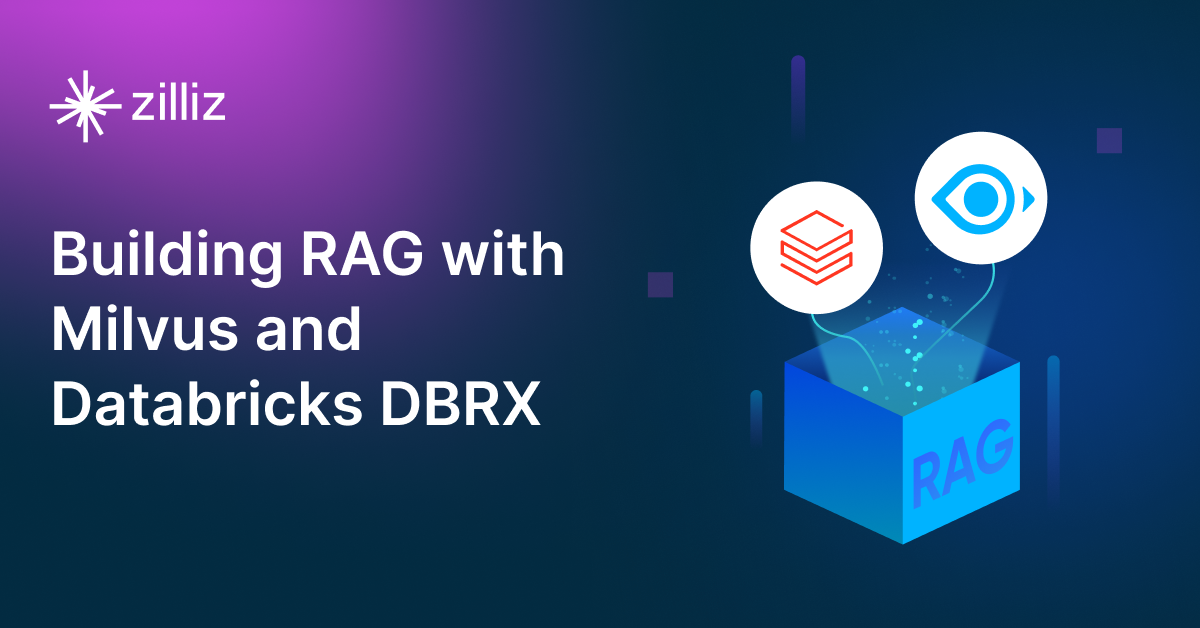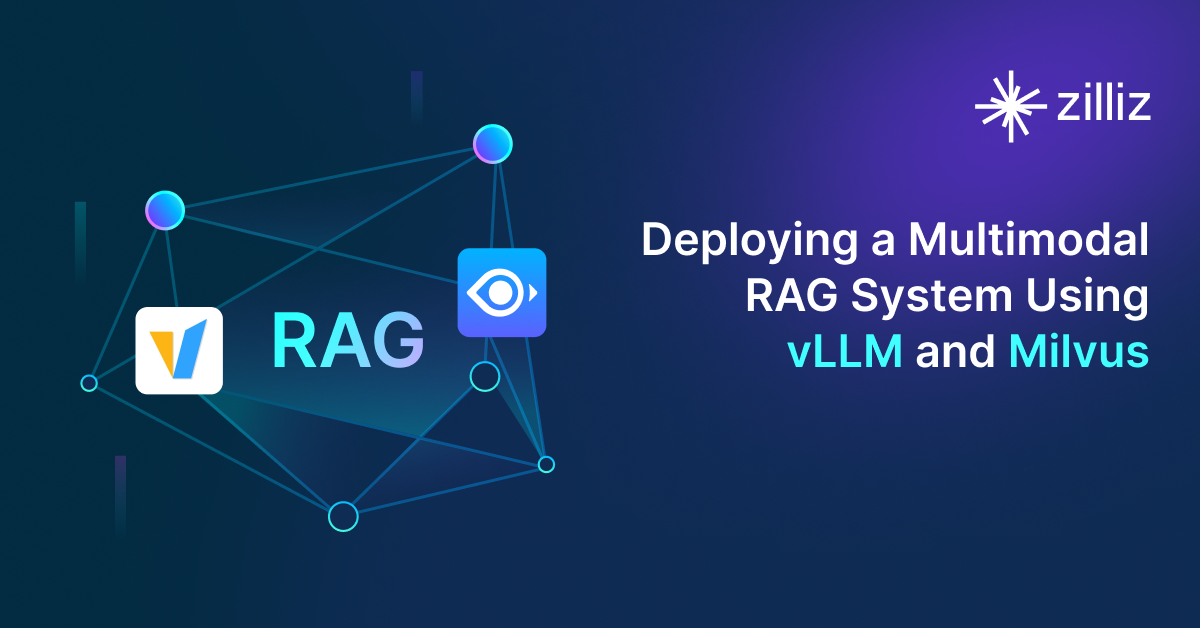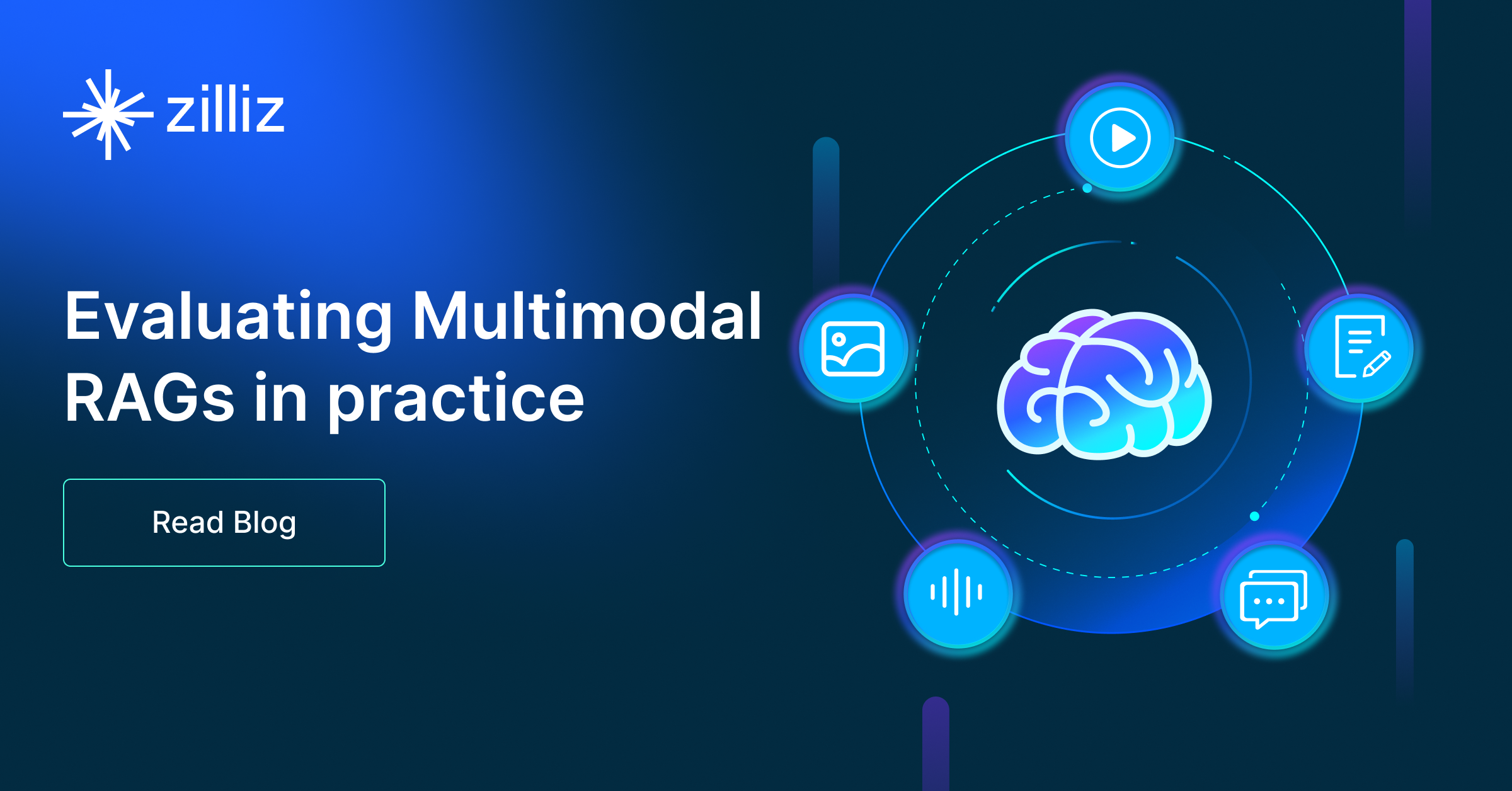Build RAG Chatbot with LangChain, Faiss, Google Vertex AI Gemini 1.5 Flash, and Cohere embed-english-v2.0
Introduction to RAG
Retrieval-Augmented Generation (RAG) is a game-changer for GenAI applications, especially in conversational AI. It combines the power of pre-trained large language models (LLMs) like OpenAI’s GPT with external knowledge sources stored in vector databases such as Milvus and Zilliz Cloud, allowing for more accurate, contextually relevant, and up-to-date response generation. A RAG pipeline usually consists of four basic components: a vector database, an embedding model, an LLM, and a framework.
Key Components We'll Use for This RAG Chatbot
This tutorial shows you how to build a simple RAG chatbot in Python using the following components:
- LangChain: An open-source framework that helps you orchestrate the interaction between LLMs, vector stores, embedding models, etc, making it easier to integrate a RAG pipeline.
- Faiss: also known as Facebook AI Similarity Search, is an open-source vector search library that allows developers to quickly search for semantically similar multimedia data within a massive dataset of unstructured data. (If you want a much more scalable solution or hate to manage your own infrastructure, we recommend using Zilliz Cloud, which is a fully managed vector database service built on the open-source Milvus and offers a free tier supporting up to 1 million vectors.)
- Google Vertex AI Gemini 1.5 Flash: An advanced AI model designed for real-time applications, Gemini 1.5 Flash is optimized for speed and responsiveness in predictive analytics and NLP tasks. Its strengths lie in generating insights rapidly while ensuring accuracy, making it ideal for use cases in customer service automation and dynamic content generation.
- Cohere embed-english-v2.0: This model specializes in generating high-quality embeddings for English text, enhancing semantic understanding in various applications. Its strengths lie in capturing nuanced meanings and context, making it ideal for tasks like semantic search, recommendation systems, and clustering. Efficient and scalable, it's perfect for developers looking to integrate advanced text analysis into their applications.
By the end of this tutorial, you’ll have a functional chatbot capable of answering questions based on a custom knowledge base.
Note: Since we may use proprietary models in our tutorials, make sure you have the required API key beforehand.
Step 1: Install and Set Up LangChain
%pip install --quiet --upgrade langchain-text-splitters langchain-community langgraph
Step 2: Install and Set Up Google Vertex AI Gemini 1.5 Flash
pip install -qU "langchain[google-vertexai]"
# Ensure your VertexAI credentials are configured
from langchain.chat_models import init_chat_model
llm = init_chat_model("gemini-1.5-flash", model_provider="google_vertexai")
Step 3: Install and Set Up Cohere embed-english-v2.0
pip install -qU langchain-cohere
import getpass
import os
if not os.environ.get("COHERE_API_KEY"):
os.environ["COHERE_API_KEY"] = getpass.getpass("Enter API key for Cohere: ")
from langchain_cohere import CohereEmbeddings
embeddings = CohereEmbeddings(model="embed-english-v2.0")
Step 4: Install and Set Up Faiss
pip install -qU langchain-community
from langchain_community.vectorstores import FAISS
vector_store = FAISS(embedding_function=embeddings)
Step 5: Build a RAG Chatbot
Now that you’ve set up all components, let’s start to build a simple chatbot. We’ll use the Milvus introduction doc as a private knowledge base. You can replace it with your own dataset to customize your RAG chatbot.
import bs4
from langchain import hub
from langchain_community.document_loaders import WebBaseLoader
from langchain_core.documents import Document
from langchain_text_splitters import RecursiveCharacterTextSplitter
from langgraph.graph import START, StateGraph
from typing_extensions import List, TypedDict
# Load and chunk contents of the blog
loader = WebBaseLoader(
web_paths=("https://milvus.io/docs/overview.md",),
bs_kwargs=dict(
parse_only=bs4.SoupStrainer(
class_=("doc-style doc-post-content")
)
),
)
docs = loader.load()
text_splitter = RecursiveCharacterTextSplitter(chunk_size=1000, chunk_overlap=200)
all_splits = text_splitter.split_documents(docs)
# Index chunks
_ = vector_store.add_documents(documents=all_splits)
# Define prompt for question-answering
prompt = hub.pull("rlm/rag-prompt")
# Define state for application
class State(TypedDict):
question: str
context: List[Document]
answer: str
# Define application steps
def retrieve(state: State):
retrieved_docs = vector_store.similarity_search(state["question"])
return {"context": retrieved_docs}
def generate(state: State):
docs_content = "\n\n".join(doc.page_content for doc in state["context"])
messages = prompt.invoke({"question": state["question"], "context": docs_content})
response = llm.invoke(messages)
return {"answer": response.content}
# Compile application and test
graph_builder = StateGraph(State).add_sequence([retrieve, generate])
graph_builder.add_edge(START, "retrieve")
graph = graph_builder.compile()
Test the Chatbot
Yeah! You've built your own chatbot. Let's ask the chatbot a question.
response = graph.invoke({"question": "What data types does Milvus support?"})
print(response["answer"])
Example Output
Milvus supports various data types including sparse vectors, binary vectors, JSON, and arrays. Additionally, it handles common numerical and character types, making it versatile for different data modeling needs. This allows users to manage unstructured or multi-modal data efficiently.
Optimization Tips
As you build your RAG system, optimization is key to ensuring peak performance and efficiency. While setting up the components is an essential first step, fine-tuning each one will help you create a solution that works even better and scales seamlessly. In this section, we’ll share some practical tips for optimizing all these components, giving you the edge to build smarter, faster, and more responsive RAG applications.
LangChain optimization tips
To optimize LangChain, focus on minimizing redundant operations in your workflow by structuring your chains and agents efficiently. Use caching to avoid repeated computations, speeding up your system, and experiment with modular design to ensure that components like models or databases can be easily swapped out. This will provide both flexibility and efficiency, allowing you to quickly scale your system without unnecessary delays or complications.
Faiss Optimization Tips
To enhance the performance of the Faiss library in a Retrieval-Augmented Generation (RAG) system, begin by selecting the appropriate index type based on your data volume and query speed requirements; for example, using an IVF (Inverted File) index can significantly speed up queries on large datasets by reducing the search space. Optimize your indexing process by using the nlist parameter to partition data into smaller clusters and set an appropriate number of probes (nprobe) during retrieval to balance between speed and accuracy. Ensure the vectors are properly normalized and consider using 16-bit or 8-bit quantization during indexing to reduce memory footprints for large datasets while maintaining reasonable retrieval accuracy. Additionally, consider leveraging GPU acceleration if available, as Faiss highly benefits from parallel processing, leading to faster nearest neighbor searches. Continuous fine-tuning and benchmarking with varying parameters and configurations can guide you in finding the most efficient setup specific to your data characteristics and retrieval requirements.
Google Vertex AI Gemini 1.5 Flash optimization tips
Gemini 1.5 Flash is optimized for low-latency inference, making it ideal for real-time RAG applications. Improve efficiency by filtering out low-relevance documents before retrieval, ensuring optimal token usage. Use structured prompts with clear formatting to enhance response clarity. Keep temperature between 0.1 and 0.2 for accuracy, fine-tuning top-p as needed. Leverage Google’s AI infrastructure for dynamic scaling to handle fluctuating workloads. Implement caching for common queries to reduce redundant processing. In a multi-model deployment, use Gemini 1.5 Flash for fast responses while reserving Pro models for deeper reasoning.
Cohere embed-english-v2.0 optimization tips
Cohere embed-english-v2.0 is a robust English-language embedding model, ideal for fast and accurate semantic retrieval in RAG systems. To optimize performance, preprocess input text by removing redundant information and normalizing formatting. Apply techniques like stemming or lemmatization to reduce the dimensionality of the input without losing meaning. Use high-performance indexing algorithms like HNSW for efficient vector search. When working with large-scale systems, batch embeddings for faster processing and minimize API latency. Consider implementing dimensionality reduction techniques to compress embeddings and reduce storage costs while retaining sufficient accuracy. For large document collections, periodically refresh the embeddings to ensure that they stay relevant to evolving data.
By implementing these tips across your components, you'll be able to enhance the performance and functionality of your RAG system, ensuring it’s optimized for both speed and accuracy. Keep testing, iterating, and refining your setup to stay ahead in the ever-evolving world of AI development.
RAG Cost Calculator: A Free Tool to Calculate Your Cost in Seconds
Estimating the cost of a Retrieval-Augmented Generation (RAG) pipeline involves analyzing expenses across vector storage, compute resources, and API usage. Key cost drivers include vector database queries, embedding generation, and LLM inference.
RAG Cost Calculator is a free tool that quickly estimates the cost of building a RAG pipeline, including chunking, embedding, vector storage/search, and LLM generation. It also helps you identify cost-saving opportunities and achieve up to 10x cost reduction on vector databases with the serverless option.
 Calculate your RAG cost
Calculate your RAG cost
What Have You Learned?
What Have You Learned?
Congratulations on completing this tutorial on building a cutting-edge RAG (Retrieval-Augmented Generation) system! You’ve embarked on a fantastic journey, integrating a powerful framework like LangChain with a vector database such as Faiss to enable lightning-fast searches that enhance user interactions. We’ve explored how the LLM, specifically the Google Vertex AI Gemini 1.5 Flash, injects conversational intelligence into your application, allowing it to engage users dynamically and contextually. Plus, the embedding model, like Cohere's embed-english-v2.0, generates rich semantic representations that help in understanding the nuances of language and meaning.
Together, these components create a seamless synergy, transforming your solutions into something truly innovative. We also provided you with some practical optimization tips and even a free cost calculator to help you evaluate your RAG system’s efficiency and scalability. As you step into the world of RAG applications, remember that the possibilities are endless. So, embrace your creativity, fine-tune your models, and don’t be afraid to experiment!
Now, it's your turn! Dive in, start building, optimize your applications, and innovate in ways that will amaze both you and your users. The future of intelligent systems is here, and it’s waiting for your unique touch! Happy building!
Further Resources
🌟 In addition to this RAG tutorial, unleash your full potential with these incredible resources to level up your RAG skills.
- How to Build a Multimodal RAG | Documentation
- How to Enhance the Performance of Your RAG Pipeline
- Graph RAG with Milvus | Documentation
- How to Evaluate RAG Applications - Zilliz Learn
- Generative AI Resource Hub | Zilliz
We'd Love to Hear What You Think!
We’d love to hear your thoughts! 🌟 Leave your questions or comments below or join our vibrant Milvus Discord community to share your experiences, ask questions, or connect with thousands of AI enthusiasts. Your journey matters to us!
If you like this tutorial, show your support by giving our Milvus GitHub repo a star ⭐—it means the world to us and inspires us to keep creating! 💖
- Introduction to RAG
- Key Components We'll Use for This RAG Chatbot
- Step 1: Install and Set Up LangChain
- Step 2: Install and Set Up Google Vertex AI Gemini 1.5 Flash
- Step 3: Install and Set Up Cohere embed-english-v2.0
- Step 4: Install and Set Up Faiss
- Step 5: Build a RAG Chatbot
- Optimization Tips
- RAG Cost Calculator: A Free Tool to Calculate Your Cost in Seconds
- What Have You Learned?
- Further Resources
- We'd Love to Hear What You Think!
Content
Vector Database at Scale
Zilliz Cloud is a fully-managed vector database built for scale, perfect for your RAG apps.
Try Zilliz Cloud for Free


